Making Liquid Metals Truly Printable
- khashayar Ghaffarzadeh
- Jun 5, 2023
- 3 min read
Liquid metals are truly a unique material. They offer amazing properties like extremely high stretchability with no change of resistance which can be useful in many textile, wearable, and/or robotic applications.
To learn more about this amazing technology join us Berlin on 17-18 OCT 2023 to RESHAPE the Future of Electronics: https://www.techblick.com/electronicsreshaped
They are typically based on a GaIn alloy with a eutectic bled that is liquid at room temperature. A thin layer of oxide spontaneously forms around the liquid droplets, helping to mechanically stabilize them.
In general, they are not easy to print. Currently, companies offer a gel version of them which can be dispensed under an applied electric force. This is an important advancement but dispensing has its own limitations.
In any case, such materials are not a drop-in solution for the printed electronics industry. Furthermore, the choice of the substrates on which one can print is typically limited to high surface energy substrates. This constraints applicability. Finally, control of sintering [removing oxide shell] and temperature stability can be challenges.
The researchers at the Air Force Research Lab - led by Christopher Tabor- are pioneering work on making liquid metals actually printable, meaning that one could use screen, gravure or other printing systems to additive deposit these materials. They presented their latest results at the TechBlick event on Wearable Technology and E-Textiles [more details here https://www.techblick.com/
To achieve this, they must put these liquid metals into a colloidal ink with reliable and consistent ‘mechanical’ sintering. The first step towards this is the control of the shell oxide. In slide 1, you will see different thickness levels of the oxide (GaxOy) formed around a GaIn droplet, ranging from 1.28nm to some 4.46 [the natural growth without control would yield about 3um].
This control is important for two reasons: (1) it enables control of the mechanical sintering which is based on the rupturing of the oxide shells through mechanical force and (b) it offers a controlled surface for build up of chemical [e.g., ligand] layers
Point (1) is shown in slide 2, where one can see the thickness of the shell determines the applied force needed to break the shell [note: breaking the shell is needed because otherwise the network of GaIn droplets would be non conductive. Once the shells are broken and the liquid metal flows together to form a conductive line, this process becomes irreversible. This is the so-called 'mechanical' sintering]
Next [slide 3] you can see how silica was added to the shells, increasing the stiffness and also enabling a ‘sudden’ rupture. Critically, this silica layer then enables formulation and addition of further ligands and polymers to enable printing on substrates with different surface tensions. In other words, it is a surface platform on which to formulate.
In slide 4 you can see that an ink has been formulated in colloidal form. This can be ‘printed’. In this case, a network of droplets are formed on the substrates, connected through the tortuous polymeric network of additions to the shell. In this state, the material is mechanically stretchable but still non conductive [the shell brings electronic transport]. However, the stretching itself will break the shells, allowing the liquid metals to form a highly stretchable conductive network.
Interestingly, the material can be stretched some 400% without any chance in resistance, which is never the case with other particle-based conductive inks [which are more printable and conductive but less stretchable]
This technology is currently being commercialized in partnerships with UES, Inc.
Many applications have been showcased as one can see in slide 5 including
Dry electrodes for measuring physiological parameters with direct skin contacts [so far studies do not show adverse impacts on bio cells]
Integrated resistive heating into textile which can stretch
Stretchable cables
This is an amazing material system that continues to amaze. In our view, it is one of the ‘hot’ development areas in printed electronics. This work shows that liquid metals can also be optimized for printing, although there is much work to be done in proving consistency of mechanical sintering, imprioving trade-off in conductivity vs shell modification, in thermal stability, in linewidth control, in compatbility with various substrates. Of course, traditional ink systems are versatile and mature technology, developed over many decades. In contract, printable liquid metals are a novice technology, but one with a clear promising roadmap. Watch this space
To learn more about this amazing technology join us Berlin on 17-18 OCT 2023 to RESHAPE the Future of Electronics: https://www.techblick.com/electronicsreshaped






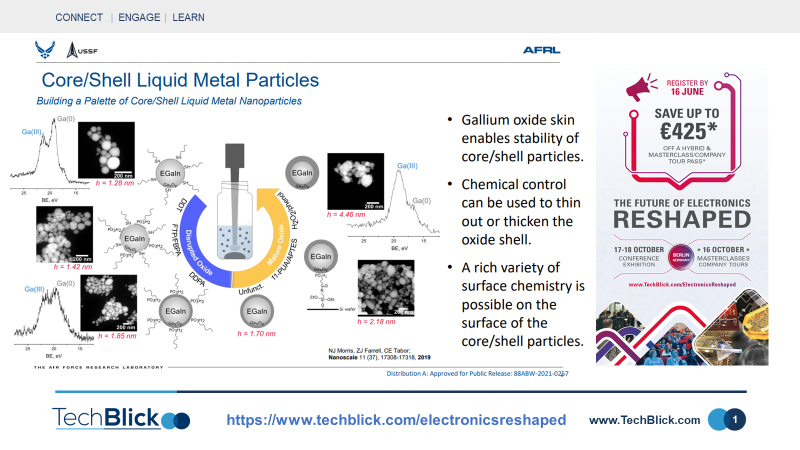

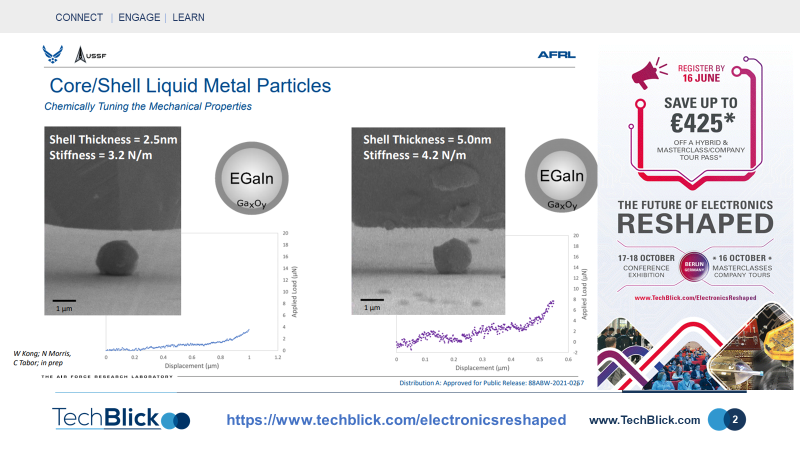

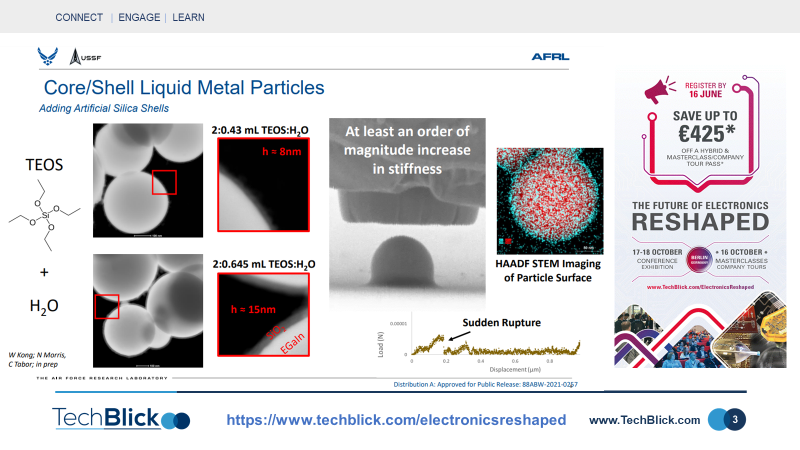

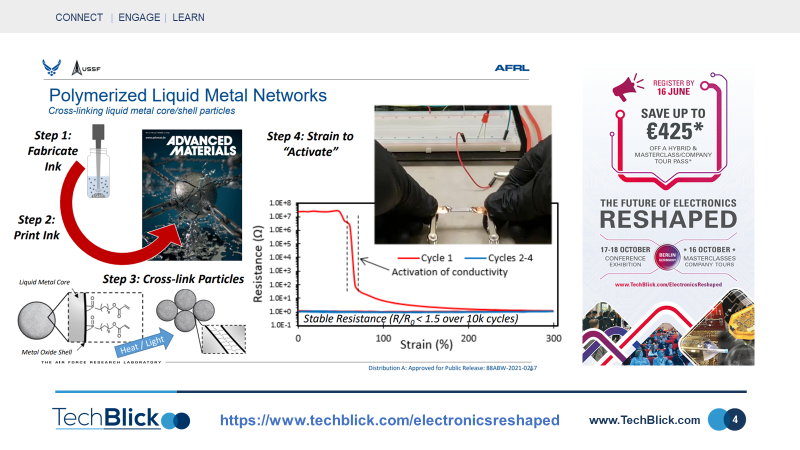

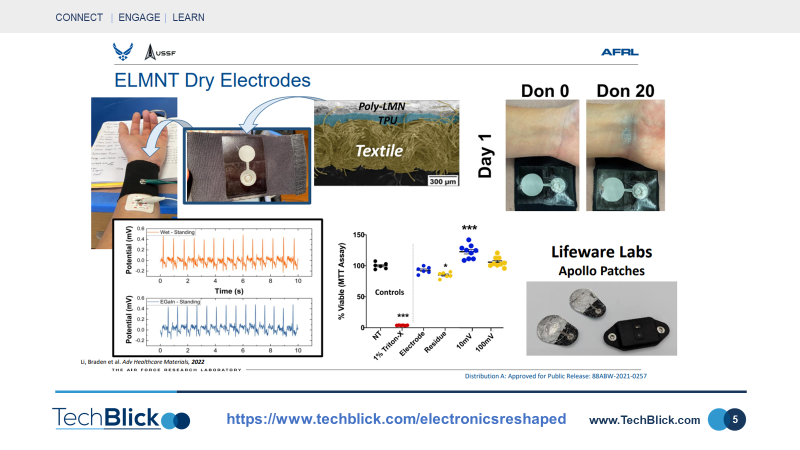

Kommentare